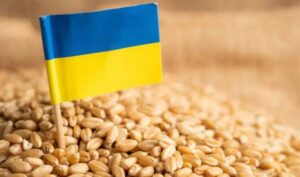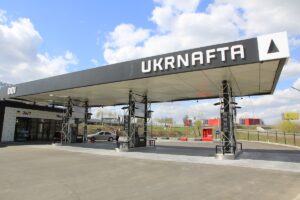
Ukraine’s real gross domestic product (GDP) grew by 1.4% in December 2024 compared to December 2023, and by 3.2% for the whole of 2024, but its growth to 3.7% is not excluded, depending on the contribution of the public sector, according to experts of the Institute for Economic Research and Policy Consulting (IER).
“Russian shelling of industrial and energy infrastructure and the offensive of Russian forces at the frontline had a negative impact on the industrial development indicators in December. According to IER estimates, electricity production decreased by 5.2% in December (compared to December 2023 – IF-U),” the IER states in the Monthly Economic Monitoring.
At the same time, real gross value added (GVA) in the extractive industry probably remained close to the previous year’s figure due to higher production of natural gas and iron ore, which continued to offset the decline in coal production.
It is noted that stable demand and logistical export opportunities contributed to the development of metallurgy (in particular, exports of finished metallurgical products continued to grow).
The machine building industry grew due to defense procurement and export growth. As a result, according to the IER, real GVA in manufacturing increased by 4.2% in December compared to December 2023.
Due to higher budget expenditures, the growth rate of GVA in construction grew faster in the fourth quarter than in the third.
As for GVA in livestock, it is declining. This applies to milk production, the number of cattle, etc. Corn harvesting continued, but at a slower pace. According to IER estimates, real GVA in agriculture declined by 3.7% yoy in December.
At the same time, central fiscal expenditures in December were record high, although complete data on the state budget are not yet available.
“Therefore, we may not have fully taken into account the impact of government spending on the performance of the public sector and the sectors of the economy that received additional funds from the budget. This may mean that our estimate of real GDP in December may be too pessimistic,” the IER said.
The Institute also added that for a more accurate assessment of the results for 2024, there is a lack of updated quarterly GDP structure for 2023, as the State Statistics Service has revised the annual figures quite significantly.
Speaking about the results of December, the IER notes that Ukraine has increased electricity imports by 2.6 times compared to December last year – to more than 430 thousand MWh.
In addition, as of January 1, 2025, the transit of Russian gas to Europe was terminated due to the expiration of the Agreement on Cooperation between the Ukrainian GTS Operator LLC and Gazprom.
In 2024, Ukraine’s seaports handled 97.2 million tons of cargo (+57% compared to the previous year), Ukrzaliznytsia transported 174.9 million tons of cargo in 2024 (+18%), and exports by road amounted to more than 10 million tons (+5%).
In December 2024, exports fell due to a decrease in stocks of agricultural products, while imports of machinery and equipment exceeded pre-war levels in dollar terms.
“In December, inflation accelerated once again in annual terms, this time to 12% compared to December 2023. The price increase in 2024 primarily reflected higher costs for producers and retailers, a poorer harvest this year, and likely some recovery in trade margins amid recovering consumer demand. The most significant increase was in food prices,” the IER emphasizes.
It is expected that in 2025, the largest funding will come from the ERA mechanism, which provides a total of $50 billion in assistance from the G7. Part of this aid will be used for military spending, so funding for non-defense needs will be lower.

In 2024, Agrotrade agricultural holding exported more than 450 thsd tonnes of grain, of which the share of its own agricultural products amounted to 230 thsd tonnes, and third-party producers – 227 thsd tonnes, the press service of the agricultural holding reported.
According to the report, most of the grain was exported to Turkey, Italy, Spain, the Netherlands, and Belgium. A partnership project with other suppliers allowed the company to expand its geography: for the first time, it shipped 54.5 thsd tonnes of wheat to Bangladesh.
“2024 was one of the most difficult years for the Ukrainian agricultural sector. The main challenges included a reduction in grain production, difficulties in finding margins, as well as constant air alerts, power outages and destroyed transportation routes due to missile attacks. Sometimes we had to change our plans drastically: look for places to store grain or adapt logistics in a short time. However, even in such conditions, we remained flexible and fully fulfilled our obligations to our customers,” said Andriy But, Director of Foreign Economic Activity Department at Agrotrade.
The agricultural holding specified that in 2024, corn and wheat were in the highest demand on the global market.
The active period of the grain trading season will end earlier – in April-May 2025. This is due to a drop in yields and a decrease in grain stocks over the past years, Agrotrade predicts.
The Agrotrade Group is a vertically integrated holding company with a full agro-industrial cycle (production, processing, storage and trade of agricultural products). It cultivates over 70 thousand hectares of land in Chernihiv, Sumy, Poltava and Kharkiv regions. Its main crops are sunflower, corn, winter wheat, soybeans and rapeseed. It has its own network of elevators with a simultaneous storage capacity of 570 thousand tons.
The group also produces hybrid seeds of corn and sunflower, barley, and winter wheat. In 2014, a seed plant with a capacity of 20 thousand tons of seeds per year was built on the basis of Kolos seed farm (Kharkiv region). In 2018, Agrotrade launched its own brand Agroseeds on the market.
Vsevolod Kozhemiako is the founder and CEO of Agrotrade.

On January 22, SE “Eastern Mining and Processing Combine” (Zheltiye Vody) announced a tender for MTPL insurance. According to the message in the electronic procurement system Prozorro, the expected cost of purchasing services is UAH 930,388 thousand.
The deadline for submitting applications is January 30.
The winner of a similar tender in June last year was IC “VUSO.
VostGOK is Ukraine’s only and Europe’s largest uranium ore mining and processing enterprise.

PJSC “Ukrtransgas” (Kiev) has announced its intention to conclude a contract with IC “VUSO” for compulsory insurance of civil liability, according to the electronic procurement system Prozorro. The expected purchase price of the relevant services is UAH 1.175 mln, the company’s price offer is UAH 1.131 mln.
“Ukrtransgas”, 100% owned by NJSC ‘Naftogaz of Ukraine’, operates the system of main gas pipelines and 12 underground gas storages of the country.
IC VUSO was founded in 2001. The company holds 50 licenses: 34 – for voluntary and 16 – for compulsory types of insurance, is represented in all regions of Ukraine. It is a member of the Motor (Transport) Insurance Bureau of Ukraine (MTSBU), the League of Insurance Organizations of Ukraine, and also a member of the Nuclear Insurance Pool.

Ukrnafta PJSC produced 1.170 billion cubic meters of gas in 2024, which is 6.5% more than in 2023 (1.097 billion cubic meters) and 1.418 million tons of oil, which is 0.6% more than in the previous year (1.410 million tons). According to the company’s press release on Thursday, production growth in oil equivalent in 2024 amounted to an additional 70.5 thousand tons of hydrocarbons, or 3%: 2.42 million tons against 2.35 million tons in 2023.
“Despite prolonged power outages that limited mechanized oil production, the company managed not only to compensate for the natural decline but also to ensure an increase in oil and gas volumes,” said Sergiy Koretsky, Ukrnafta’s CEO, as quoted in the press release. He added that the company has been improving its production figures for the second year in a row.
According to the company, in 2025, Ukrnafta will continue to drill new wells, upgrade equipment, replacing Soviet equipment with modern and technological equipment from world leaders, and intensify production.
“Ukrnafta is Ukraine’s largest oil producer and operator of the national network of gas stations. In March 2024, the company took over the management of Glusco assets and operates 547 filling stations – 462 owned and 85 managed.
The company is implementing a comprehensive program to restore operations and update the format of its filling stations. Since February 2023, the company has been issuing its own fuel coupons and NAFTAKarta cards, which are sold to legal entities and individuals through Ukrnafta-Postach LLC.
“Ukrnafta holds 92 special permits for commercial development of fields. It has 1832 oil and 154 gas production wells on its balance sheet.
Ukrnafta’s largest shareholder is Naftogaz of Ukraine with a 50%+1 share.
In November 2022, the Supreme Commander-in-Chief of the Armed Forces of Ukraine decided to transfer to the state a share of corporate rights of the company owned by private owners, which is currently managed by the Ministry of Defense.